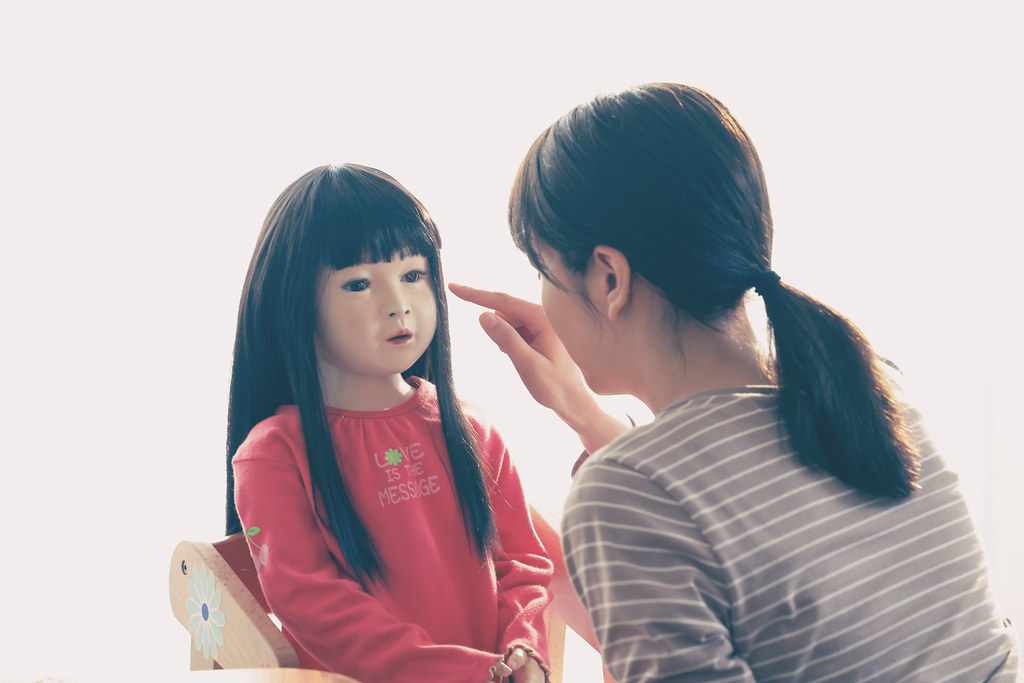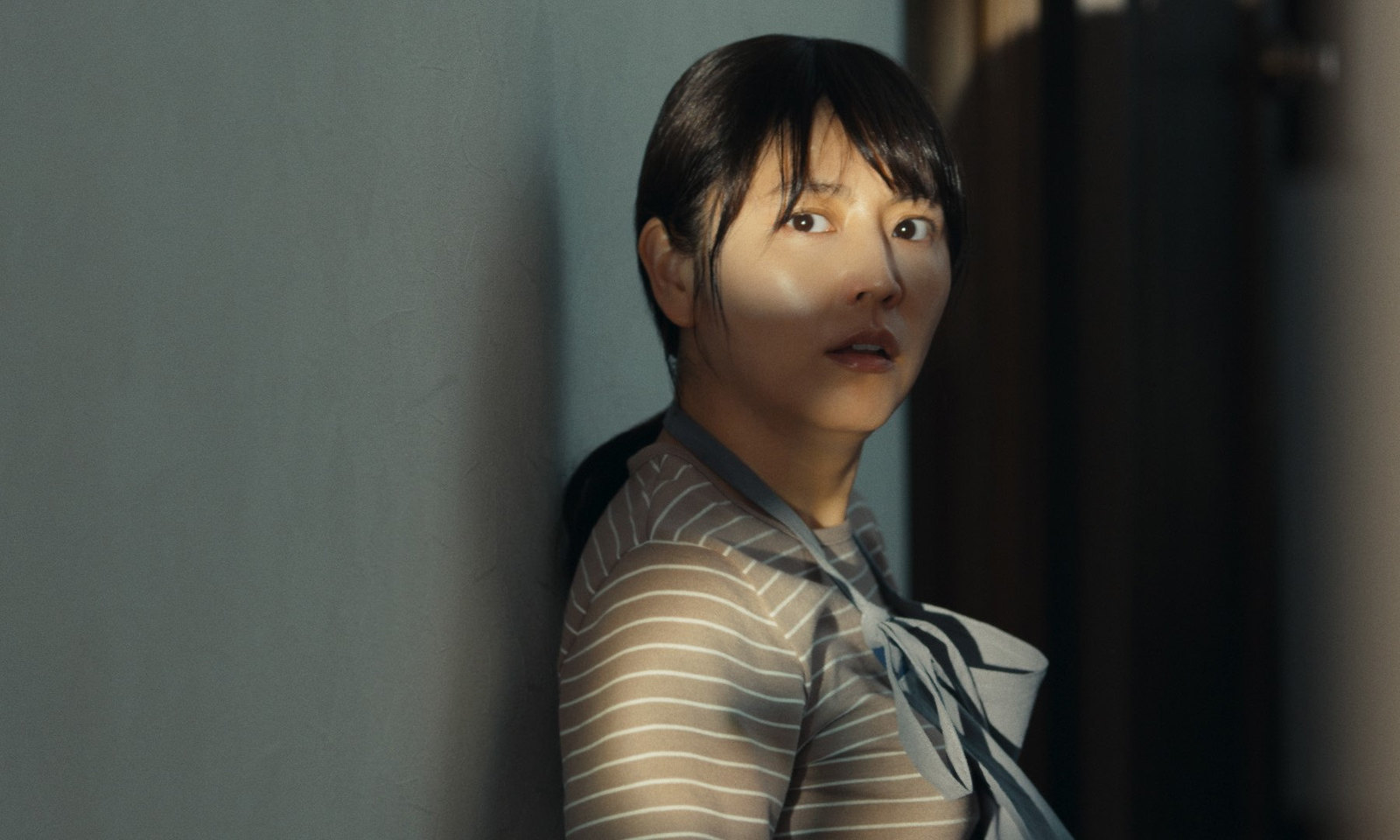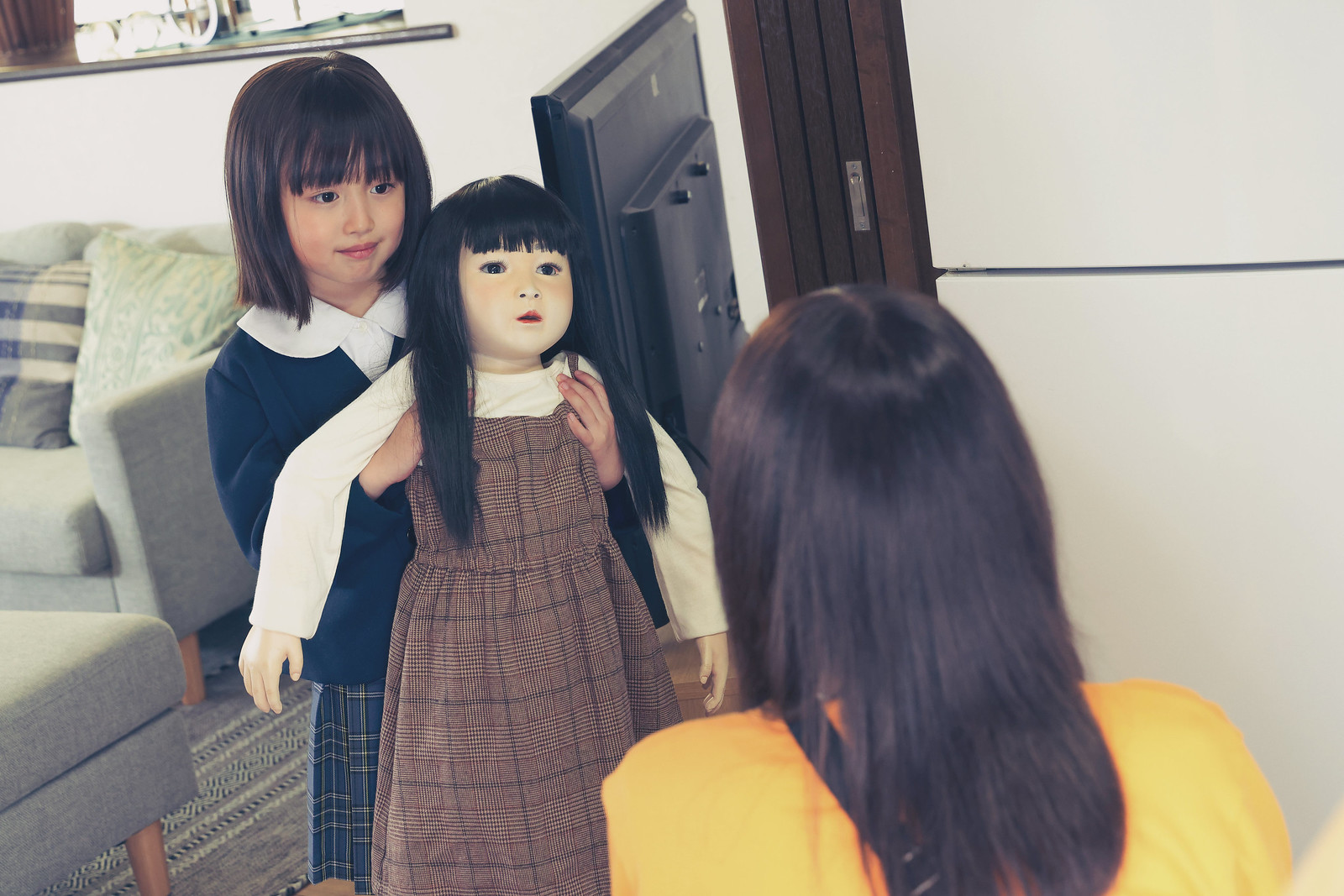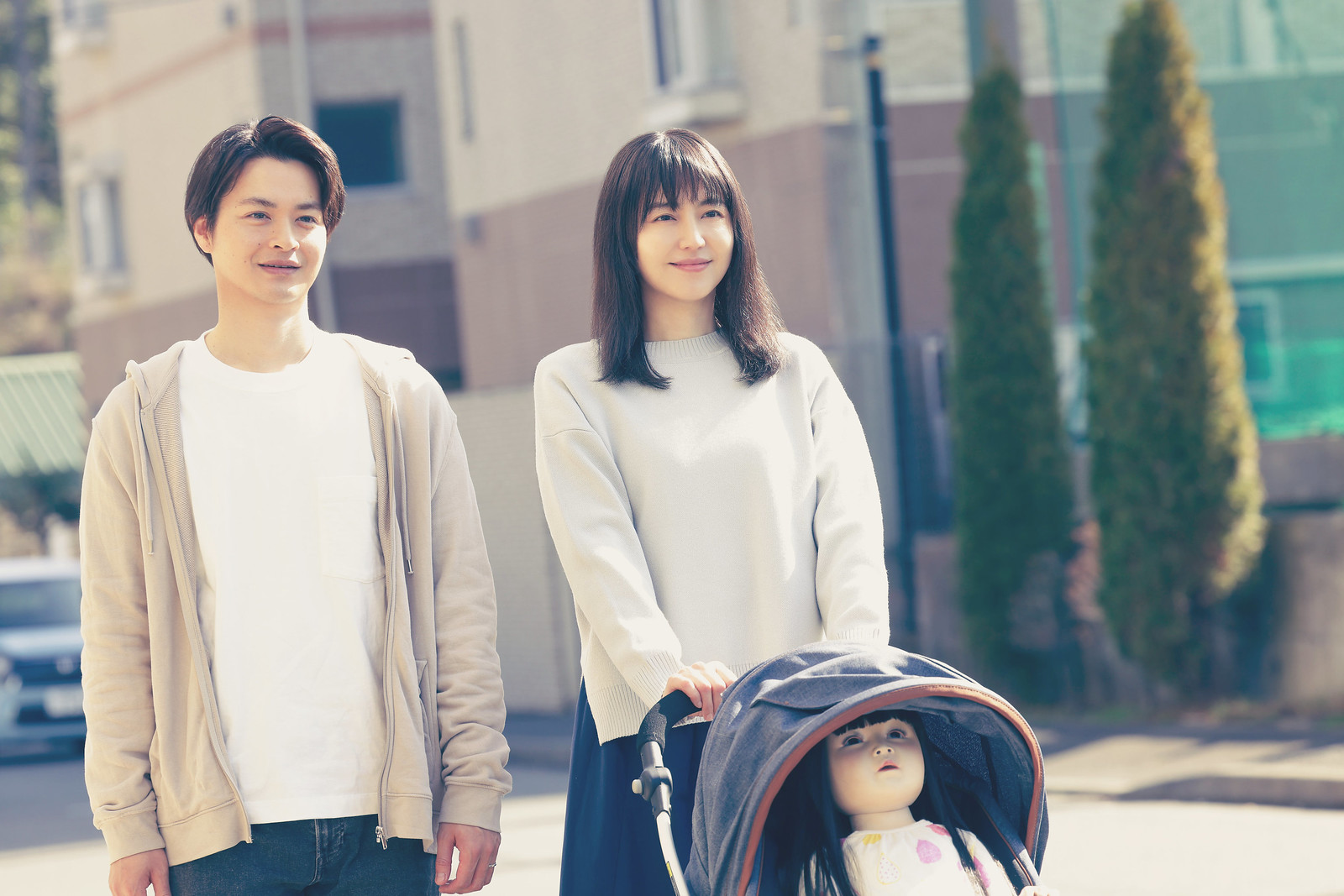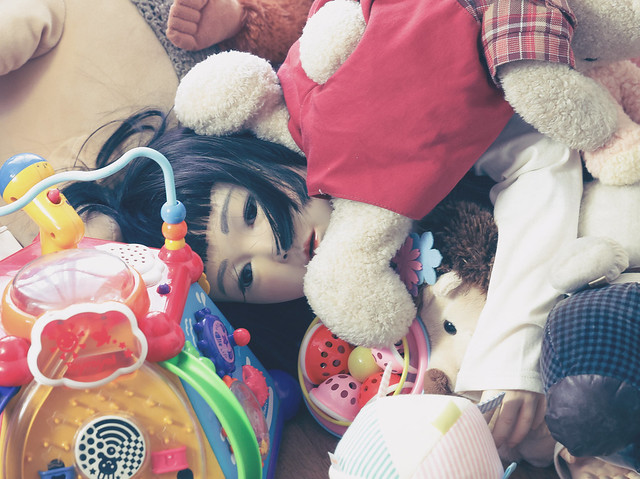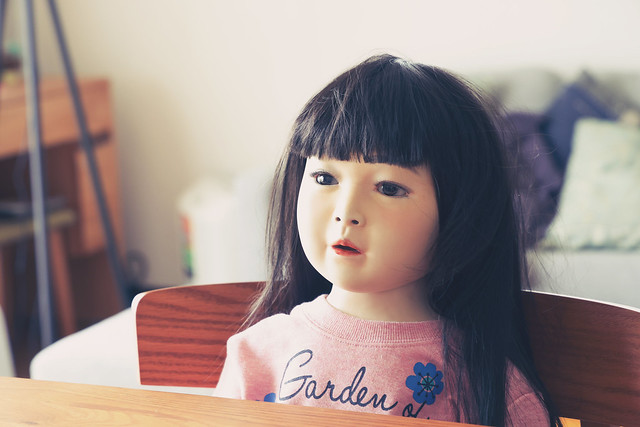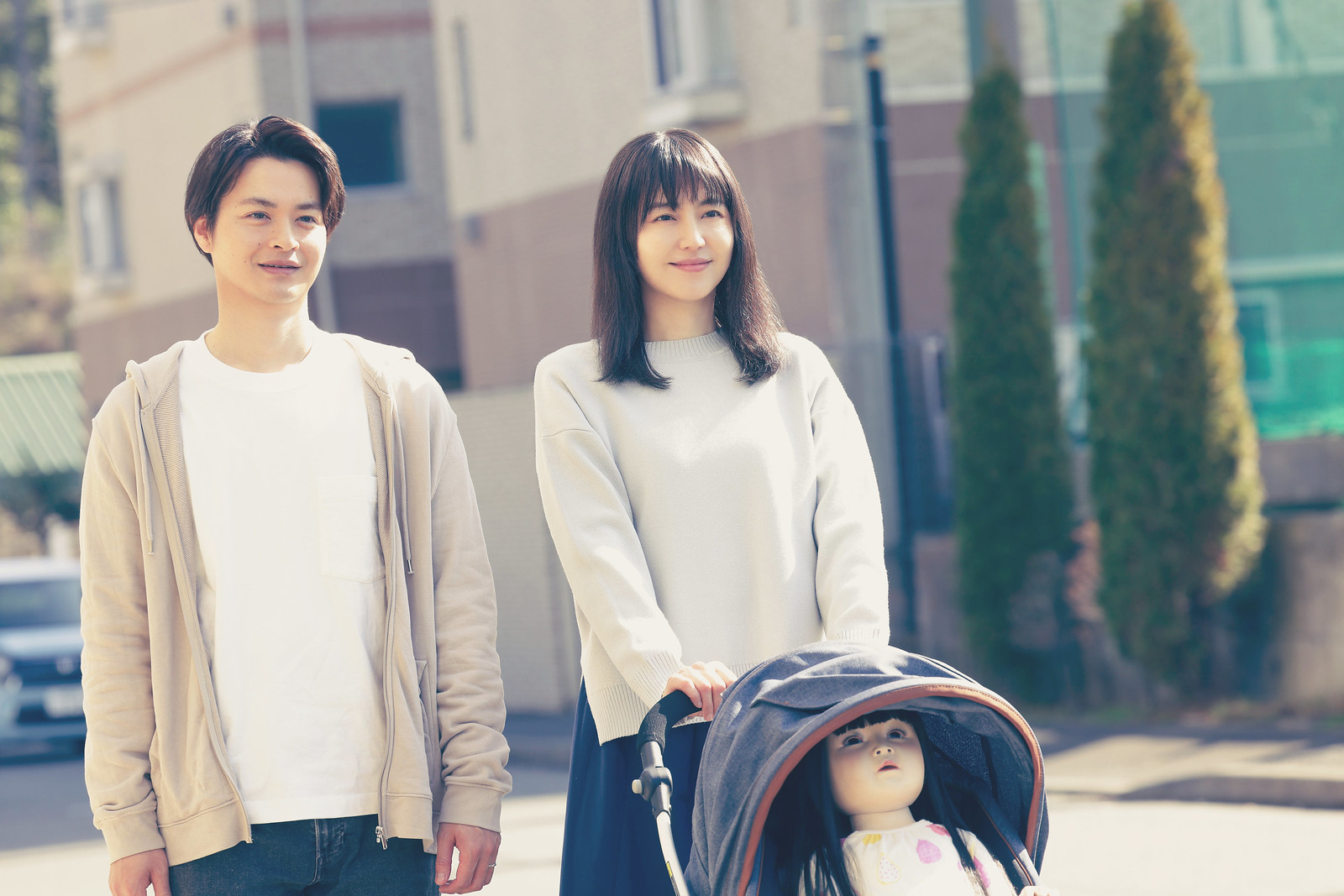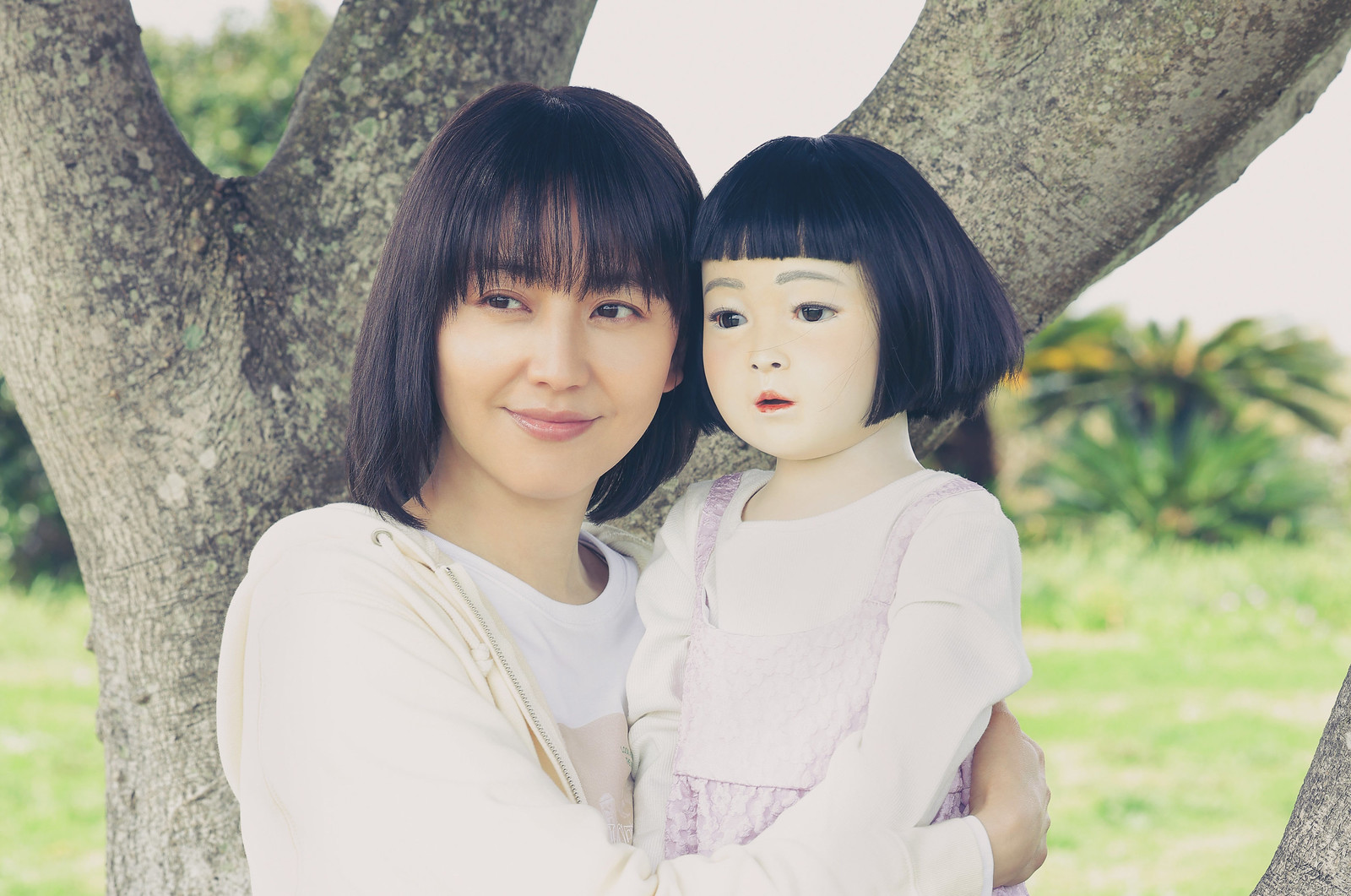Udine 2025 Interview: DOLLHOUSE Director Shinobu Yaguchi Talks Disturbing Dolls, Uncomfortable Allusions, and Swinging For The Fences
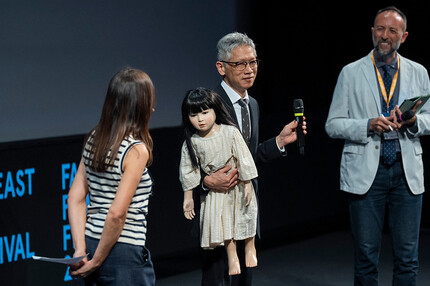
For the first few days of this year's Far East Film Festival, you couldn't talk to anyone without one of you mentioning ‘That Puppet’. In true Udine fashion, directors and stars mingled and meshed with press and audience as we weaved in and out of screenings, snacks, and sit-downs. Amidst that crowd was the continually unnerving and bemusing sight of a pint-sized doll, carried everywhere by its guardian, film director Shinobu Yaguchi. It was there in the Teatro, it passed you on your afternoon stroll — Yaguchi reportedly even brought it with him to dinner.
The central couple in Yaguchi's delicious new horror film Dollhouse are equally disturbed to see this wooden little girl everywhere they turn. Initially intended as a plaything and friend for their daughter, the doll becomes mixed-up in the mind of mother Yoshie (Masami Nagasawa, in an excellently anxious performance) with the memory of her daughter’s deceased sibling. She wants rid of the wooden figure, throwing it to the floor and bagging it up for disposal. But wait — what's in the bag isn't the doll, but her living child — crying, scared, confused.
It's distressing stuff, brilliantly engaging themes of child abuse and cyclical trauma with a remarkable degree of tact. Yaguchi is a comedy director by trade — regular readers will be familiar with him from cult classics Swing Girls and Waterboys , and the delightfully-named Wood Job!. A rollercoaster is no good without a rise and a fall, and Yaguchi makes sharp use of his comedy chops to fine-tune Dollhouse into a winning ride. A domestic thriller a la Jason Yu's Sleep morphs into something resembling an X-Files episode, then a pitch-black screwball comedy, and finally a RING-esque island showdown that flaunts a bewildering string of stylistic twists and tricks.
The morning after DOLLHOUSE was unleashed in the Teatro, I sat down with Yaguchi (and the doll) to discuss tackling challenging subject matter and throwing in the kitchen sink while you're at it.
This is a film with difficult themes, which are wrapped up in a film that's nonetheless pure entertainment. What are your thoughts on how popular cinema can explore challenging topics?
The story itself is a tragic one. A hundred years ago, a young girl tries to find someone to fill the role of her mother, and fails to. In the present, a mother is trying to find a substitute for her deceased daughter, but she cannot. What they find is this doll. Using this doll, they try to find some solace, but they cannot — because the doll is cursed.
But it was also important to bring the appeal of Japanese movies — which means that it wouldn’t be a movie containing nothing but a dense sense of terror. Instead, it would be a fast-paced movie with many developments, one after the other, giving it a sense of speed that also elevates the development of the story.
Your films are well-known for their unusual premises, but it's striking in this film to be confronted with imagery that implies child abuse — cleverly explored through the use of the doll as an interchangeable stand-in for the daughter. Were you concerned that the content of the film might be going too far for some audiences?
Absolutely. That was one of my concerns, so I was very attentive, very careful in engaging this theme.
My first ten movies were all comedies. I would take the happy moments and the sad moments and turn them all into laughter. But this time, right from the very first scene, you have a family that has lost their little daughter. There was no way that I would abuse this with humor.
A small child dies. I knew that, on some level, somebody would be hurt by this imagery. But I decided not to avoid this theme. The tragedy had to be told this way — straightforwardly, and as I wanted it to be.
The last fifteen minutes of this film are very stylistically ambitious and impressive. You throw in transitions and homages and special effects in quick succession. What prompted you to go wild with this finale?
The movie shifts from the horror genre to a monster movie. This is because I wanted the audience to understand the kind of harm that this doll inflicts on the human beings that surround her. This is a movie about people living in our contemporary times — there are inexplicable things that can cause us psychological damage.
Dollhouse screened at the 57th Far East Film Festival in Udine on April 27th and will be released in Japanese cinemas on June 13th.
Blake Simons
contributed to this story.












